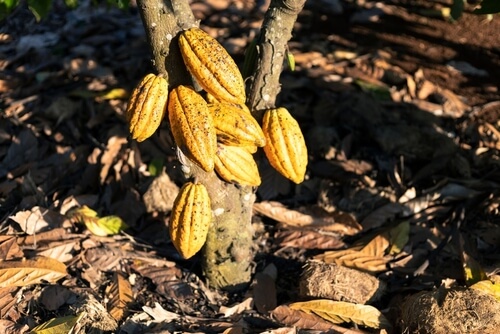On Wednesday, Cocoa extended its win streak to nine sessions as the Ivory Coast and other top producers suffered a supply crunch due to El Niño.
US cocoa March futures surged 3.96% to $5,426.50 per metric ton (MT) on February 07, setting a seventh consecutive all-time high. Moreover, industry watchers predict a 1.41% lift to $5,503.00 per MT on the following market day.
Year-to-date (YTD), the soft commodity has advanced 29.33%, including a 14.92% monthly gain in January. Also, London Cocoa futures for March delivery edged 2.40% higher to an all-time high of $4,344.00 per MT.
Cacao plants are susceptible to climate change as they require a balance of alternating precipitation and sunshine to thrive. In addition, abnormally heavy rains accelerate the spread of the black pod disease, which can ruin entire farms.
Farmers in Divo, a city on the southern Ivory Coast, complained that a consistent overabundance of rain has hampered harvests. They anticipate a yield of 1,900 tons this year, 36.67% lower than last year’s 3,000 tons.
Commodity experts forecast that the Ivory Coast will produce 1.75 million metric tons (MMT) of cocoa beans this crop year. It will mark a 23.91% decline from the 2.30 MMT crop in the 2022/23 harvest season.
Lastly, the International Cocoa Organization (ICO) warned that it sees a similar deterioration in the 2024/25 season.
Ivory Coast Cocoa Crisis Threatens Demand
Economists expressed concern after cocoa prices jumped 12.54% in just this month’s first five trading sessions. Chocolate manufacturers may cut output instead of tolerating the rising production costs, leading to a crash in demand.
Prices have more than doubled since the start of 2023 because of El Niño, which causes severe drought or heavy rains. Last July, abrupt rainfall devastated Ivory Coast farms as cacao plants were flowering.
As a result, the Ivorian Coffee-Cocoa Council blocked the sale of export contracts, citing domestic supply shortages. Industry estimates project a 35.00% year-over-year (YoY) slide in cocoa port arrivals between October 01 and January 31.
Analysts caution of a global supply deficit in the 2023/24 crop year, the third in a row.











